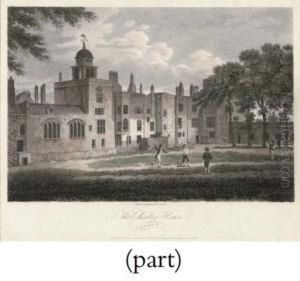James Sargant Storer Paintings
James Sargant Storer was an English engraver, draftsman, and antiquary, born in 1771. He is best known for his works that document architectural and topographical subjects, particularly those focusing on historical buildings, ruins, and ecclesiastical sites across Great Britain. Storer's contributions to the field of engraving and his detailed studies of gothic architecture and ancient monuments played a significant role in the early 19th-century revival of interest in medieval heritage and the conservation of Britain's architectural past.
Storer received his education in art and engraving techniques under the guidance of notable mentors of his time, although specific details about his training are scarce. He swiftly made a name for himself with his precise and detailed engravings, which were highly sought after by publishers and collectors. Throughout his career, Storer collaborated with various authors and historians, contributing illustrations to books and periodicals that aimed to educate the public about Britain's historical and architectural treasures.
One of Storer's significant contributions to the field was his work on the multi-volume series 'The Antiquarian Itinerary,' which he published in collaboration with his son, Henry Sargant Storer. This work, along with others like 'Views in Edinburgh and its Vicinity' and 'History and Antiquities of the Cathedral Churches of Great Britain,' showcased his meticulous attention to detail and his passion for Gothic architecture. These publications were instrumental in documenting and preserving the history and appearance of many notable buildings and sites at a time when interest in Britain's medieval past was growing.
James Sargant Storer's legacy is not only in the volume of his work but also in the influence his engravings had on the appreciation and preservation of historic architecture in Britain. His dedication to capturing the beauty and intricacy of ancient and medieval buildings contributed to a broader public interest in architectural conservation. Storer passed away in 1853, leaving behind a body of work that continues to be of interest to historians, architects, and artists alike, for its historical value and artistic merit.
